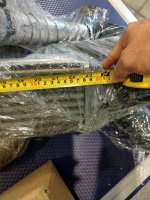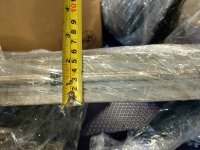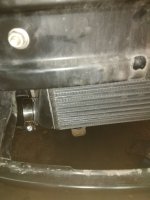Hello,
So i am thinking that in the spring i would like to replace the intercooler with something aftermarket.. bigger.
I don't really have anywhere to do the work.. to remove the bumper..etc
(i will in the spring, will have some tools at hand)
So i was wondering if anybody has had a chance to measure the space for the intercooler.
Wondering if i could install something like :
180mm x 700mm x 63mm
I will probably still remove the bumper and take my own measurements before actually ordering the intercooler; but i still wanted to ask, maybe somebody has already done the deed, or somebody remembers to take some measurements if they take the bumper off before I do.
So i am thinking that in the spring i would like to replace the intercooler with something aftermarket.. bigger.
I don't really have anywhere to do the work.. to remove the bumper..etc
(i will in the spring, will have some tools at hand)
So i was wondering if anybody has had a chance to measure the space for the intercooler.
Wondering if i could install something like :
180mm x 700mm x 63mm
I will probably still remove the bumper and take my own measurements before actually ordering the intercooler; but i still wanted to ask, maybe somebody has already done the deed, or somebody remembers to take some measurements if they take the bumper off before I do.
This post contains affiliate links which may earn a commission at no additional cost to you.








